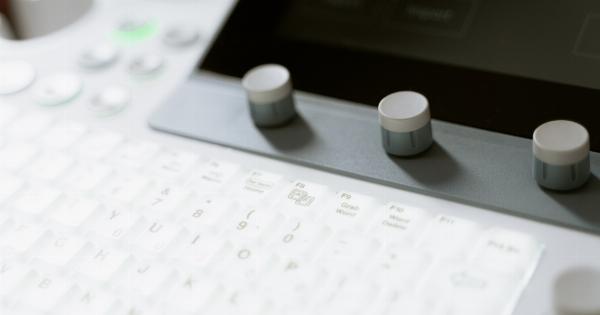What are the Different Ways to Find Your Pulse?
Knowing how to find your pulse is important in monitoring your heart rate.
It can help you determine whether you’re exercising in your target heart rate zone, detect if there are some abnormalities in your heart rate, and check if there are any improvements in your cardiovascular health. Here are different ways to locate your pulse easily:.
One of the easiest and most common places to find a pulse is on your wrist. This pulse point is called the radial pulse, and you can find it on the thumb side of your wrist near the base of your thumb. To find your pulse on your wrist:.
- Extend your arm with your palm facing up.
- Using the fingers of your other hand, lightly press the skin on the thumb side of your wrist just below the base of your thumb.
- You should feel a rhythmic pulsation beneath your fingers. This is your radial pulse.
To get an accurate measurement of your heart rate, count the number of beats you feel for 15 seconds, and then multiply that number by four to get your heart rate per minute.
At Your Neck
If you have trouble finding your pulse on your wrist or you need a more accurate measurement, you can try to find your pulse on your neck.
The pulse point in your neck is called the carotid pulse, and you can find it on the side of your neck just below your jaw. To find your pulse on your neck:.
- Sit down and tilt your head slightly back to expose your neck.
- Using your fingers, locate your windpipe (trachea) in the center of your neck.
- Slide your fingers to the side of your windpipe until you feel the pulse in your neck. Be cautious not to press too hard on your neck.
Again, to get an accurate measurement of your heart rate, count the number of beats you feel for 15 seconds, and then multiply that number by four to get your heart rate per minute.
At Your Temple
You can also find a pulse point on your temple, which is called the temporal pulse. It’s located on the side of your forehead just in front of your ear.
Since this is a smaller pulse point, it might be difficult to feel your pulse on your temple, but it’s still a great way to find your pulse. To find your pulse on your temple:.
- Sit down in a quiet room and relax for a few minutes.
- With your fingers, feel for your pulse on the side of your forehead in front of your ear.
- Be patient and gentle in searching for the pulse, as it’s not always easy to feel on your temple.
At Your Groin
The femoral pulse is located in your groin area. This is a more advanced pulse point to find, so it’s not typically used for daily checking of heart rate.
It’s often used by medical professionals to assess blood flow to the legs and to check for circulation issues. To find your femoral pulse:.
- Lie down on your back and bend your knees.
- Find your hip bone by feeling your pelvis with your fingers.
- Move your fingers down toward your groin until you feel the pulse in the crease between your thigh and your pelvis. Be cautious not to press too hard.
At Your Ankle
Finding your posterior tibial pulse on your ankle is another pulse point that’s not commonly checked but is sometimes used by medical professionals to evaluate circulation issues in the legs. To find your posterior tibial pulse:.
- Sit down and take off your shoe and sock on one foot.
- Find the anklebone above your heel on the inside of your foot.
- Slide your fingers in a line toward the middle of your foot until you feel the pulse. Again, be cautious not to press too hard.
At Your Elbow
The pulse point at your elbow is called the brachial pulse, which is not commonly checked for heart rate but is often used by medical professionals to assess blood flow to the forearm and hand. To find your brachial pulse:.
- Rest your arm on a table with your palm facing up.
- Using your other hand, feel for the pulse in the inside crease of your elbow where your biceps and triceps meet.
At Your Chest
You can feel your pulse on your chest by finding the apical pulse, which is the heartbeat of the apex of the heart. This pulse point is most often checked by medical professionals. To find your apical pulse:.
- Lie down on your back or sit up and tilt your head back.
- Find the center of your chest just below your breastbone and above your stomach.
- Place your fingers between your ribs and feel for the heartbeat.
On the Side of Your Foot
The dorsalis pedis pulse, also known as the foot pulse, is located on the top of your foot. It’s not often checked for heart rate but is sometimes used by medical professionals to evaluate circulation issues in the feet.
To find the dorsalis pedis pulse:.
- Sit down and take off your shoe and sock on one foot.
- Find the midpoint between your big toe and the bone on the side of your foot.
- Slide your fingers toward the top of your foot, and you should feel the pulse.
At Your Lower Jaw
The mandibular pulse, also known as the jaw pulse, is located on the side of your lower jawbone, near your earlobe.
This pulse point is not often used for measuring heart rate but is sometimes used by medical professionals to check circulation in the face and head. To find your mandibular pulse:.
- Sit down and relax your jaw.
- Using your fingers, feel for the pulse on the bone just below your earlobe on the side of your face.
- To get an accurate measurement, count the number of beats you feel for 15 seconds, and then multiply that number by four to get your heart rate per minute.
Conclusion
Learning how to find your pulse is beneficial in monitoring your heart rate.
It’s an easy skill to learn and can help you assess whether you’re doing the right exercises to improve your cardiovascular health or whether there are any abnormalities in your heart rate that you need to address. Take the time to learn where to find your pulse, and measure it regularly to promote your overall health.





























